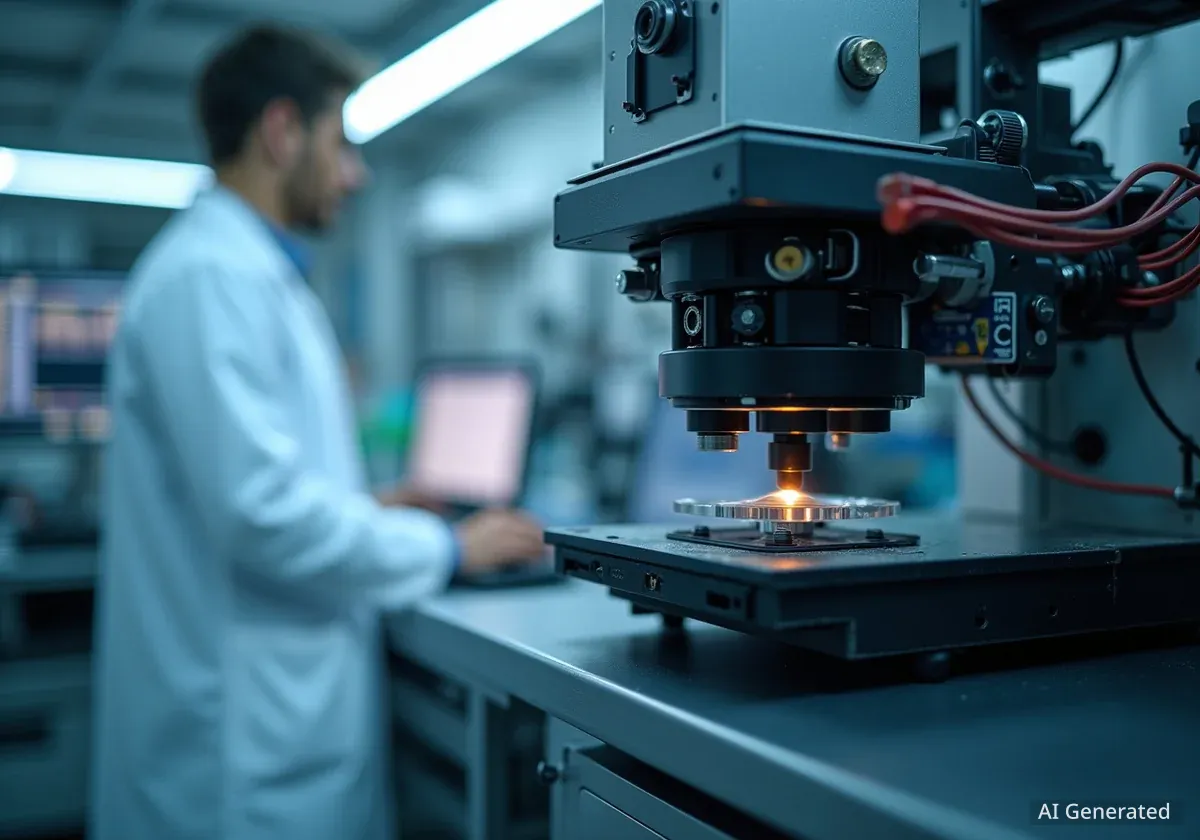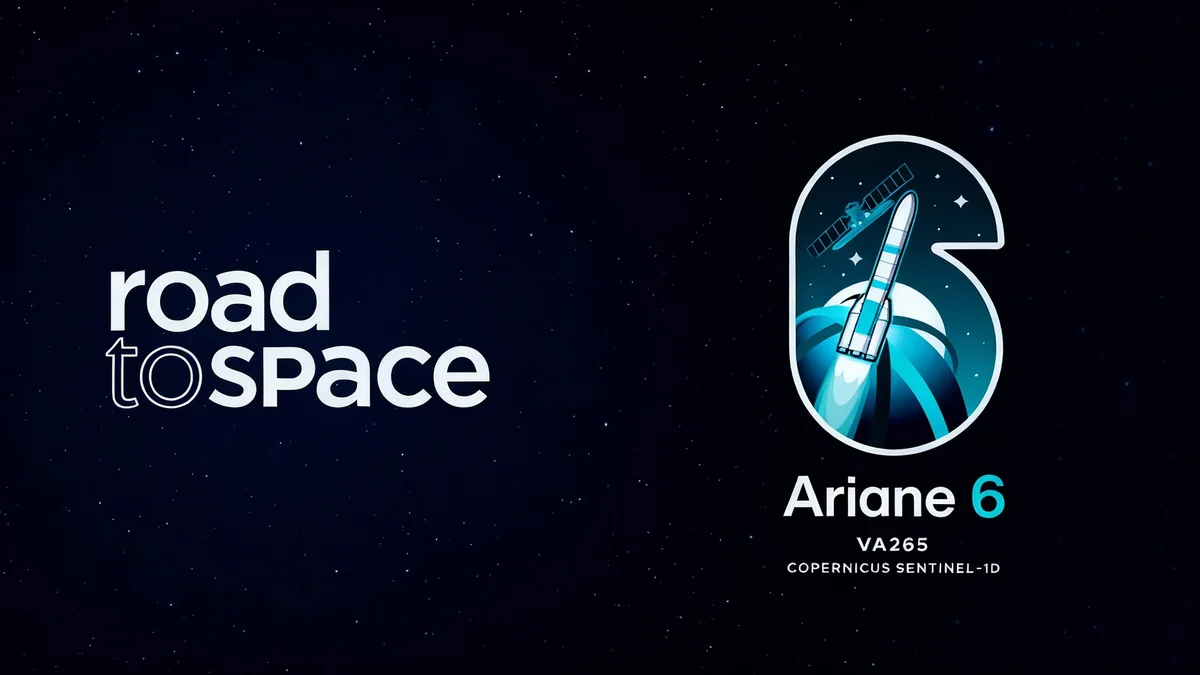A new high-precision calibration device developed by Germany's National Metrology Institute (PTB) is a critical component for the European Space Agency's (ESA) upcoming FORUM mission. This technology will ensure the accuracy of the satellite's measurements, which are designed to provide unprecedented insights into Earth's climate system.
The FORUM mission aims to fill a major gap in climate science by measuring far-infrared radiation from Earth for the first time from space. The success of this objective depends on the extreme accuracy of its primary instrument, an advanced spectrometer, which the new German-developed technology makes possible.
Key Takeaways
- Germany's PTB developed a new on-ground calibration device for ESA's FORUM climate mission.
- The device ensures the unprecedented accuracy of FORUM's spectrometer, which will measure Earth's far-infrared radiation.
- This mission will be the first to map this part of the electromagnetic spectrum from space, providing crucial data on Earth's energy budget.
- The project involved creating new measurement systems, coatings, and manufacturing processes funded by ESA's technology program.
Understanding the FORUM Mission's Goal
The European Space Agency's ninth Earth Explorer mission is named FORUM, which stands for Far-infrared Outgoing Radiation Understanding and Monitoring. Its primary goal is to study a critical aspect of our planet's climate: the balance between incoming solar energy and the energy Earth radiates back into space.
This balance, known as Earth's radiation budget, is a fundamental factor controlling the planet's surface temperature. While scientists have measured many parts of this budget, a significant portion of the outgoing energy in the far-infrared spectrum has never been systematically measured from space.
FORUM is designed to close this knowledge gap. It will carry a spectrometer that can observe this radiation with a level of detail and accuracy never before achieved in orbit. These measurements will help scientists refine climate models and improve our understanding of how Earth's climate system functions.
What is Far-Infrared Radiation?
Far-infrared radiation is a type of light that is invisible to the human eye. It is part of the thermal energy that Earth emits into space. A significant amount of this energy, particularly radiation influenced by water vapor and ice clouds, falls within this spectral range. Measuring it accurately is essential for a complete picture of how Earth cools itself.
The Challenge of Unprecedented Accuracy
To achieve its scientific objectives, the FORUM spectrometer must operate with exceptionally low uncertainty. This means its measurements need to be incredibly precise, a standard that has been difficult to achieve even in controlled laboratory settings on Earth.
"The spectrometer onboard the FORUM mission will measure Earth’s outgoing radiation with very low uncertainty, meaning its measurements will be very accurate. A level of uncertainty this low was at the limit of what was achieved in the best labs, on ground, five years ago. Never in space."
Christian Monte, Head of Detector Radiometry and Radiation Thermometry at PTB
Achieving this level of performance in the harsh environment of space requires a flawless calibration system. The spectrometer needs a stable and perfectly understood reference source in orbit to continuously check and adjust its readings. This onboard reference source is a device known as a 'blackbody'.
The Role of a Blackbody Calibrator
In physics, a blackbody is an ideal object that absorbs all incoming radiation and reflects none. While perfect blackbodies do not exist, engineers create devices that closely mimic this behavior. For an instrument like FORUM's spectrometer, a blackbody provides a known, stable temperature and emission signature, serving as a benchmark for all other measurements.
For the data to be reliable, the onboard blackbody itself must be calibrated with even greater precision on the ground before launch. This presented a significant technological hurdle, as no existing ground equipment could meet the mission's stringent requirements.
German Institute Develops a Groundbreaking Solution
To solve this calibration challenge, ESA turned to the National Metrology Institute of Germany (PTB) through its General Support Technology Programme (GSTP), which funds the development of new space technologies. The team at PTB was tasked with creating an entirely new on-ground reference blackbody capable of calibrating FORUM's flight hardware.
"We have developed a new on-ground reference blackbody, with half the uncertainties so far achieved on ground," explained Christian Monte. "This allowed us to calibrate the blackbody which will actually fly on FORUM with the desired level of uncertainty."
The development process required multiple innovations:
- New Temperature Measurement System: A novel system was created to monitor the device's temperature with extreme precision.
- Advanced Coating: A new type of surface coating was applied to ensure the device behaved as closely as possible to a perfect blackbody.
- Specialized Manufacturing: A unique welding process was developed to assemble the device without damaging the highly sensitive coating.
A Unique Facility
According to Christian Monte, the PTB facility is the only one in the world capable of performing calibrations in the far-infrared range with the demanding accuracy required by the FORUM mission. This unique capability was central to the project's success.
Ensuring Stability with a Coldscreen
A key part of the new calibration system is a component called a coldscreen. A blackbody's accuracy depends on its surrounding temperature being stable and uniform.
"For this we developed a coldscreen, which is essentially a highly emissive black plate very uniform in its temperature, mounted in front of the blackbody’s aperture,” stated Daniela Narezo Guzmán, who leads the Infrared Radiometry working group at PTB. This component creates a controlled thermal environment, isolating the blackbody from any external temperature fluctuations during calibration.
Innovations for Long-Term Mission Success
The collaboration between PTB and ESA extended beyond just the initial calibration. The PTB team proposed enhancements to ensure the long-term accuracy of the FORUM instrument once it is in space.
"To make sure that the low uncertainty is maintained during its operational lifetime in space, we proposed the inclusion of extra temperature sensors that would help us identify any variations in the measurements," noted Daniela Narezo Guzmán. The company responsible for the flight blackbody, Micos, adopted this suggestion and integrated the additional sensors.
The 'Twin Blackbody' Concept
Looking to the future, the PTB team also proposed developing an identical twin of the flight blackbody. This ground-based twin would be operated under simulated space conditions, including vacuum, radiation, and launch vibrations. By monitoring the twin, scientists could understand how the sensors on the orbiting blackbody might degrade over time and apply corrections to the mission data.
"If this proves to be an effective way of detecting degradation, it could become a valuable method applicable to other missions," she added.
Felice Vanin, ESA’s FORUM payload manager, praised the international effort. "The success of this GSTP activity was reflected in the synergy and collaboration across different nations and entities. It was remarkable to witness how we all work together towards mission success."





